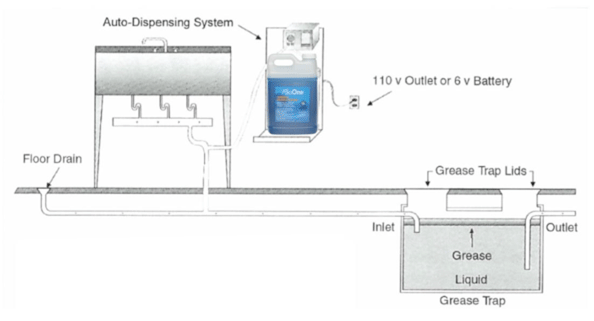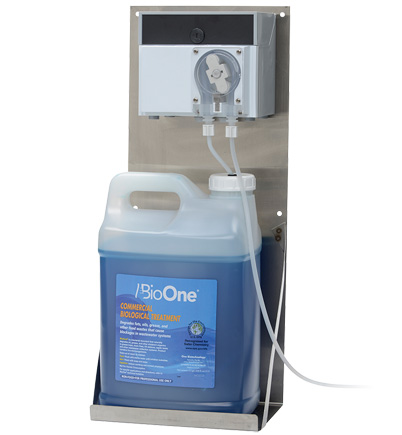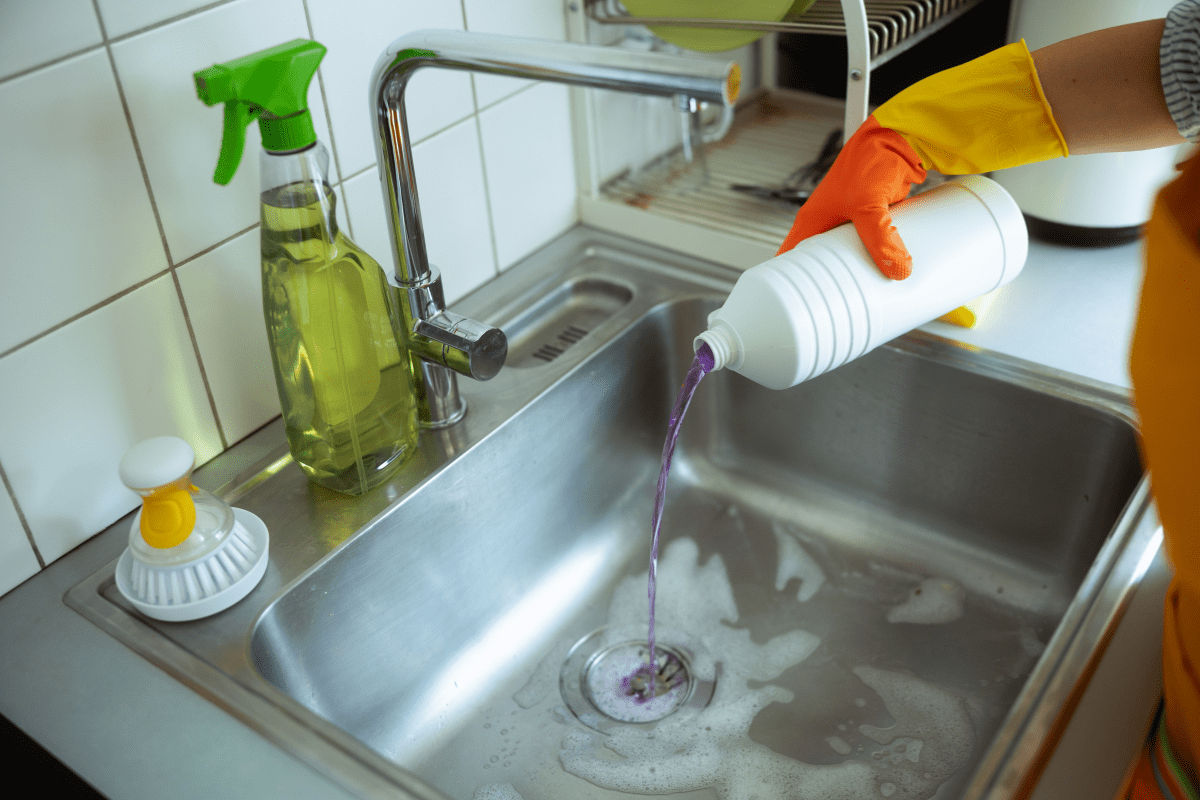
Antibacterial and disinfecting cleaners can knock back the “good” microbes your septic tank relies on. A little, well-diluted use (normal cleaning per the label) is usually fine because the system can rebound. Routine or heavy use, though, slows waste breakdown, raises sludge and scum, creates odors and slow drains, and can stress the drain field. The safer path is a septic-friendly routine and a bacterial, non-caustic drain maintenance product that supports, rather than fights, your tank’s biology.
How Your Septic System Works
Wastewater enters your tank, where it naturally separates: fats and oils float (the scum layer), liquids settle in the middle (effluent), and heavier solids sink (the sludge). The real engine here is bacteria. They digest and stabilize organic waste so the liquid leaving the tank is clearer.
From there, effluent flows to the drainfield, where soil and the thin biological layer at the trench surface (often called a biomat) provide final treatment before water filters into the ground. When the tank’s microbes are healthy, the whole train runs on time. When they’re not, problems stack up.
What Antibacterial Cleaners Do Once They Hit the Tank
Many household disinfectants use one of a few active ingredients—chlorine bleach (sodium hypochlorite), quaternary ammonium compounds (“quats”), or phenolic disinfectants. Their job on a countertop is to kill or inhibit microbes. When enough of those products wash into your septic tank, they don’t distinguish between “bad” and “good” bacteria. They can:
- Suppress beneficial bacteria, slowing digestion.
- Shift pH or add chemical stress, especially with strong caustics/solvents.
- Accumulate as repeated “shock” doses, which can push a once-healthy system out of balance over time.
Occasional, diluted use from everyday cleaning usually won’t crash a healthy system; repeated, concentrated use can.
Short-term vs. Long-term Effects
In the short term, you might notice stronger sewer odors, foaming in fixtures, or slower drains after a heavy cleaning day. (Slow drains can also be a physical clog—so don’t rule out a mechanical issue.)
Over the long term, antibacterial overuse leads to thicker scum/grease caps and faster sludge buildup (meaning more frequent pumping). When digestion slows, solids can carry over into the drainfield, where the biomat can become restrictive instead of helpful. That’s how backups and costly drainfield repairs begin. Regular inspection (about every 1–3 years) and pumping (about every 3–5 years) keeps you ahead of those risks.
How Much is Too Much?
Think about concentration and frequency. A capful of diluted cleaner during normal housekeeping is one thing; pouring multiple cups of strong disinfectant down every drain on the same day is another. Risk also climbs if you combine disinfectants with other stressors such as:
- Chemical drain openers (harsh acids/alkalis and solvents)
- Paints, solvents, and thinners
- Antibiotics entering the system (they’re designed to affect bacteria)
A practical rule of thumb from extension guidance: small, occasional, well-diluted use is usually manageable; chronic or heavy use is risky..
Signs Your Septic Biology Is Out of Balance
- Persistent odors in the house or yard
- Multiple slow, gurgling drains (not just one sink)
- Lush grass or wet spots over the drainfield
- Alarm trips or unusually cloudy effluent in monitored systems
A Septic-Safe Cleaning Routine That Actually Works
- Use non-antibacterial, biodegradable cleaners for everyday jobs when you can. Reserve disinfectants for true disinfection moments (per label directions).
- Skip chemical drain openers. Try a plunger or drain snake first; if needed, call a pro.
- Space out water use (laundry loads, long showers, dishwasher) to avoid “flooding” the tank and field.
- Limit garbage disposal use; ground-up food adds to sludge and pumping frequency.
- Never pour paints, solvents, or harsh chemicals down sinks or toilets.
Why Bacterial Drain Care Helps
Instead of “burning through” a clog with caustics, a bacterial, non-caustic drain maintenance product adds friendly microbes that digest fats, oils, and grease, the usual culprits behind slow drains, without shocking your tank’s biology. BioOne® is one well-known example. Aqua Pro sells BioOne® and offers it as part of a septic-safe routine for homes, restaurants, and facilities that want to maintain flow and protect their drain fields.
Bottom line
Your septic tank is a living treatment system. If you routinely feed it antibacterial and harsh chemicals, it can’t do its job. Keep disinfectants for targeted needs, avoid chemical drain openers, and support the biology with smart cleaning habits and a bacterial, non-caustic drain product. Pair that with regular inspection and pumping, and you’ll save yourself headaches (and money) over the long haul.

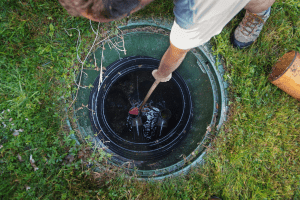

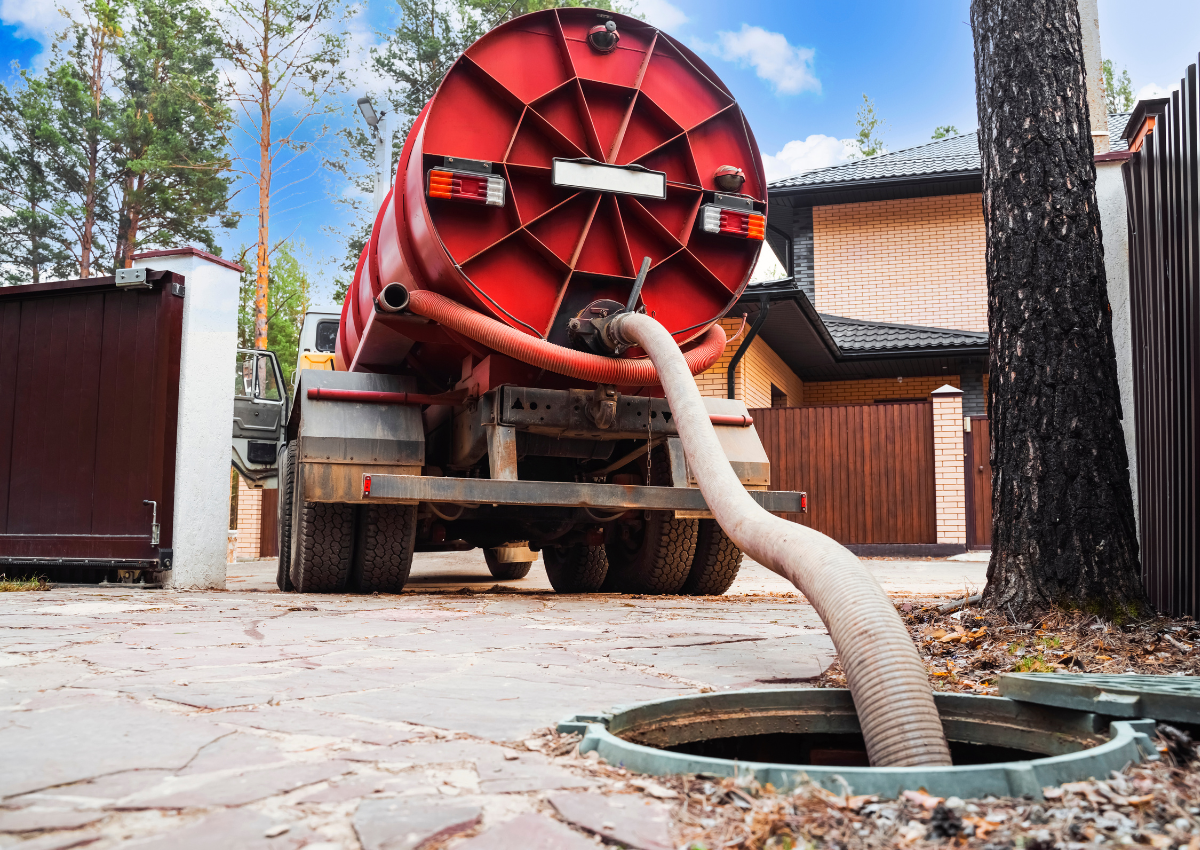
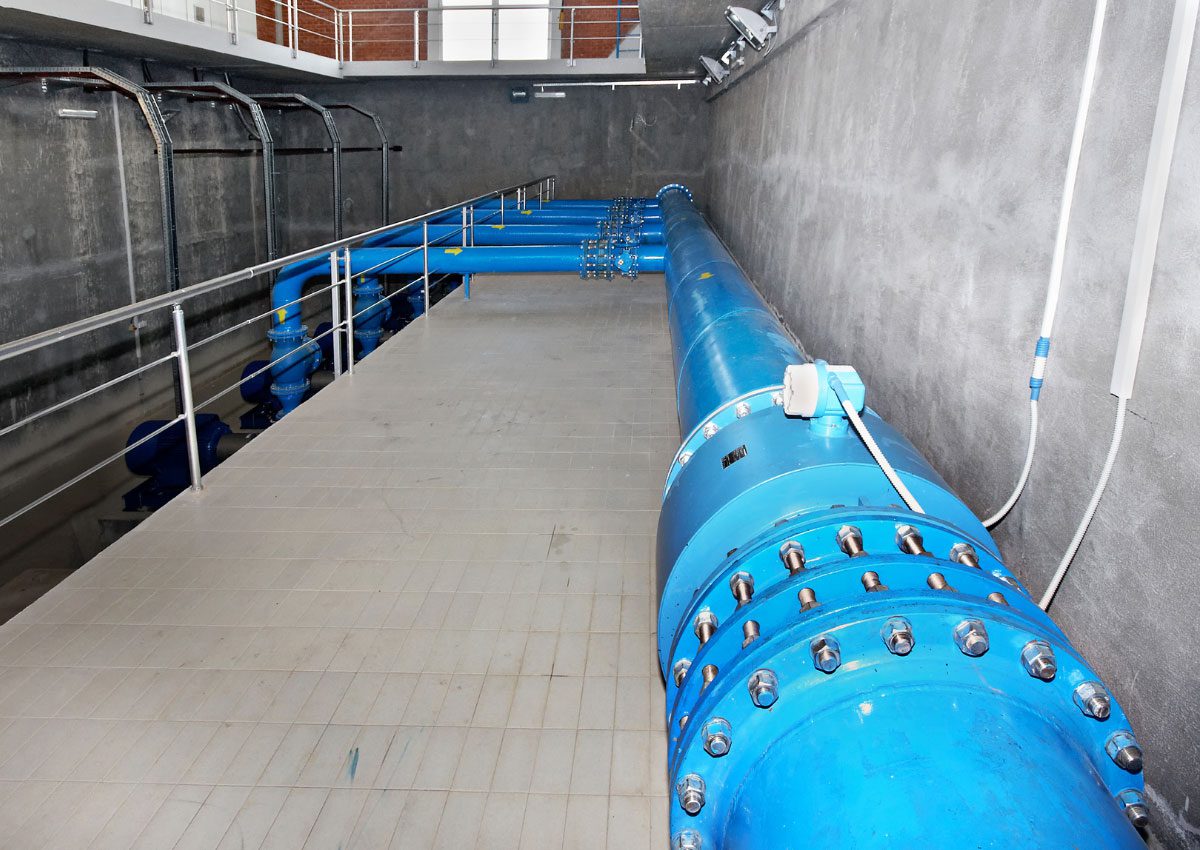
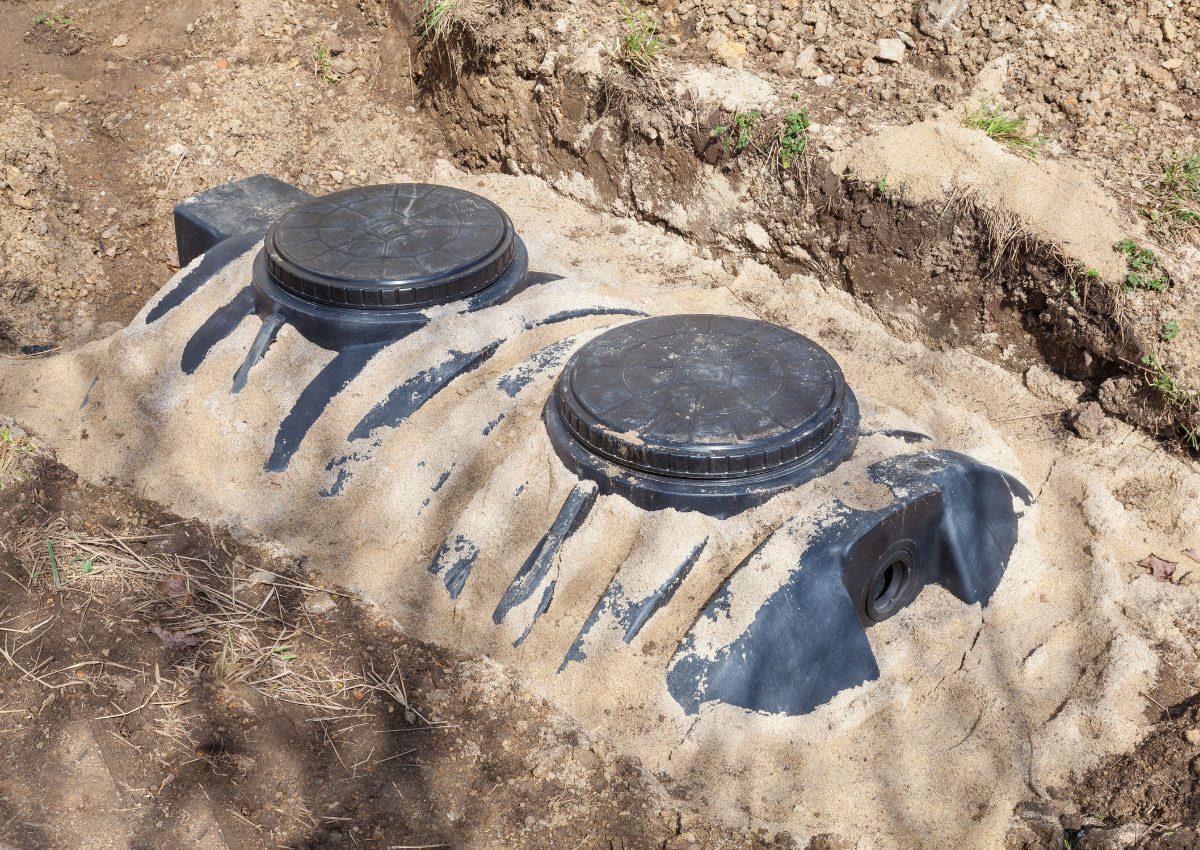



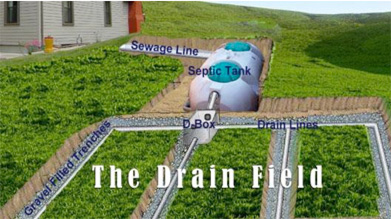 Septic systems require live bacteria to consume, digest, and degrade grease, oil, and other organic matter so that proper functioning can be maintained. When a septic system is properly maintained, the connected drain field can also function according to design.
Septic systems require live bacteria to consume, digest, and degrade grease, oil, and other organic matter so that proper functioning can be maintained. When a septic system is properly maintained, the connected drain field can also function according to design.
